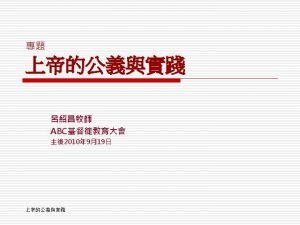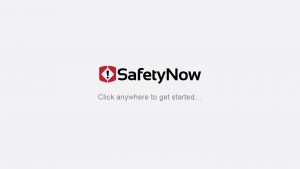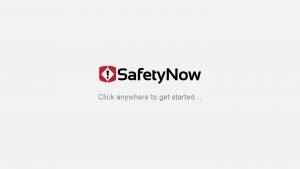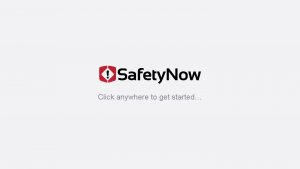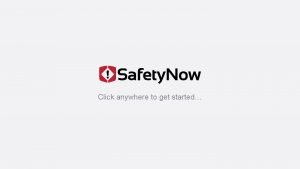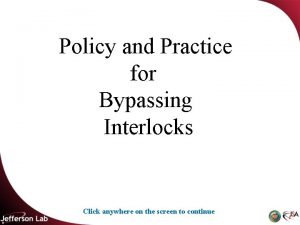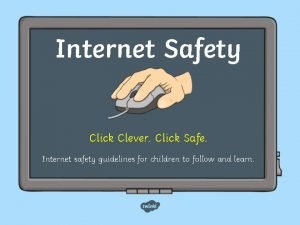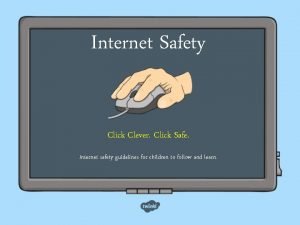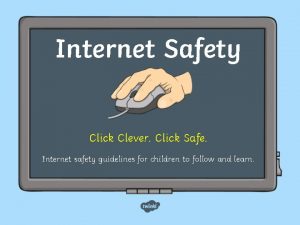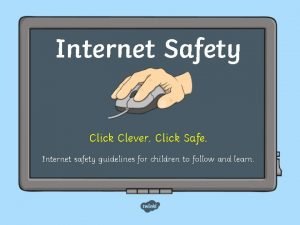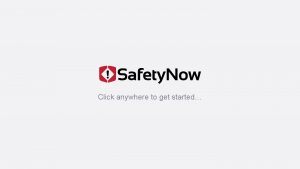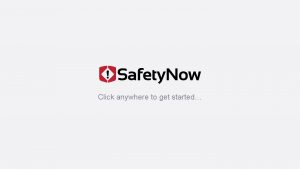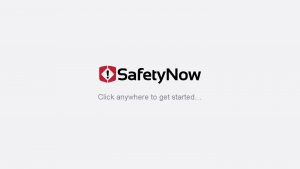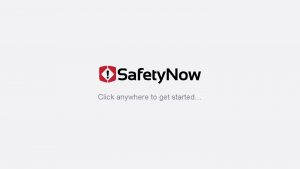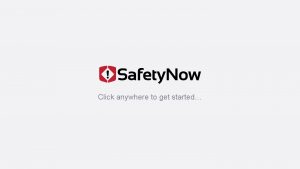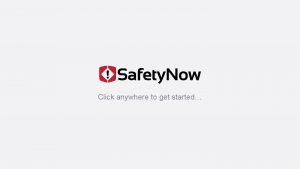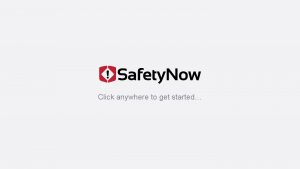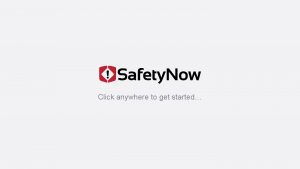Click anywhere to get started WORKPLACE INSPECTIONS CONSTRUCTION













- Slides: 13

Click anywhere to get started…

WORKPLACE INSPECTIONS - CONSTRUCTION

What’s at Stake? Workplace inspections prevent incidents, injuries and illnesses.

What’s the Danger? Hazards / Dangers in the Workplace. • Inspections should be done prior to the start of work as well as periodically throughout the shift and at the end of the work task. • Workplace inspections identify hazards in a work area. After identified, they need to be corrected before work proceeds. • Objects, equipment, people, or even animals find their way into work areas disrupting the work and creating additional hazards. • Elimination of hazards is the most effective way to avoid injuries and property damage incidents.

What’s the Danger? • Important to remove any unnecessary people, items, or equipment prior to the start of a work task. • By removing unnecessary personnel from a work area there are less people that have the chance to interfere with the work if something were to go wrong. • Objects that are not needed in the area create trip hazards or can be struck by moving equipment should be moved. • Biological hazards such as insects or wildlife in work areas can pose many hazards to workers. • Insects such as ticks or spiders can carry disease or poison that can affect an individual for years. • Insects and wildlife can also distract employees from their work.

What’s the Danger? Other types of hazards: • Safety hazards such as those caused by inadequate machine guards, unsafe workplace conditions, unsafe work practices. • Biological hazards caused by organisms such as viruses, bacteria, fungi and parasites. • Chemical hazards caused by a solid, liquid, vapor, gas, dust, fume or mist. • Ergonomic hazards caused by physiological and psychological demands on the worker, such as repetitive and forceful movements, awkward postures arising from improper work methods, and improperly designed workstations, tools, and equipment. • Physical hazards caused by noise, vibration, energy, weather, heat, cold, electricity, radiation and pressure. • Psychosocial hazards that can affect mental health or well-being such as overwork, stress, bullying, or violence.

How to Protect Yourself The phrase the “devil is in the detail” is particularly apt in unveiling a plan to implement an effective inspection. Purpose of inspections: • listen to the concerns of workers and supervisors • gain further understanding of jobs and tasks • identify existing and potential hazards • determine underlying causes of hazards • recommend corrective action • monitor steps taken to eliminate hazards or control the risk (e. g. , engineering controls, administrative controls, policies, procedures, personal protective equipment)

How to Protect Yourself What to examine: Every inspection must examine the WHO, WHAT, WHERE, WHEN and HOW. The length of an inspection depends on: - What is found - How many questions are asked - How large and complex the work area is

How to Protect Yourself Inspection occur? Depends on the following: • the frequency of planned formal inspections may be set in your legislation • past incident records • number and size of different work operations • type of equipment and work processes - those that are hazardous or potentially • number of shifts - the activity of every shift may vary • new processes or machinery • legislative requirements for your jurisdiction

How to Protect Yourself Follow – up analysis of inspections: Review the information from regular inspections to identify where corrective action was needed. Use older reports to identify trends. Analysis may show: • priorities for other corrective action • need for improving safe work practices • insight about why incidents are occurring in particular areas • need for education and training in certain areas • areas and equipment that require more in-depth hazard analysis

How to Protect Yourself Reports: Keeping inspection records is important. Past inspection records show what has been previously identified. They also show what an earlier inspection team concentrated on and what areas it did not inspect. Use the older inspection reports to help look for issues, and then determine whether recommendations were implemented.

How to Protect Yourself Construction Industry Safety Inspections • Conduct routine self – inspections which cover the entire worksite as often as necessary, but at least weekly. • Ensure that the subcontractor implements a similar self – inspection process. • More frequent due to dynamic nature. General Industry Safety Inspections • Conduct routine self – inspections which cover the entire worksite with a frequency of at least monthly and the entire worksite covered at least quarterly. Planning: • Underscoring all the written material referencing inspections is theme that without thoughtful and strategic planning, effective inspections will not likely occur.

Final Word The foundation of a successful and effective investigation starts with strategic and thoughtful planning by all the stakeholders in the management and worker paradigm.
 Get into/out of
Get into/out of Injustice anywhere is a threat to justice everywhere essay
Injustice anywhere is a threat to justice everywhere essay Design anywhere build anywhere
Design anywhere build anywhere Practice click
Practice click Click anywhere to start
Click anywhere to start Click anywhere to start
Click anywhere to start Click anywhere to start
Click anywhere to start Click anywhere to start
Click anywhere to start Click anywhere to start
Click anywhere to start You are my kryptonite figurative language
You are my kryptonite figurative language Click clever
Click clever Cyber safety
Cyber safety Click clever click safe
Click clever click safe Click clever click safe
Click clever click safe

